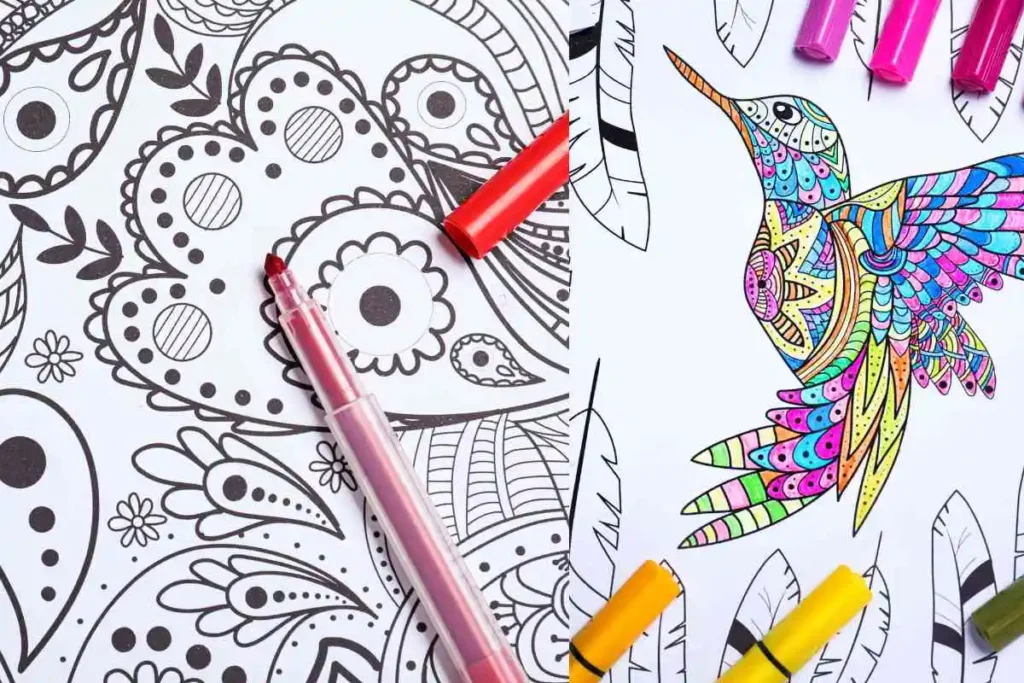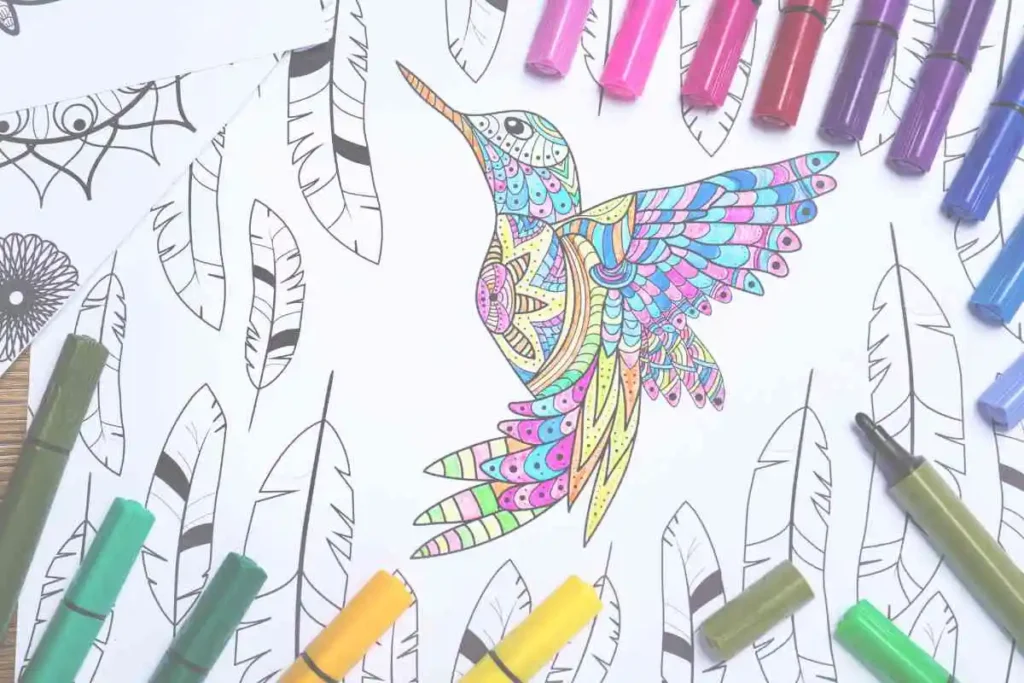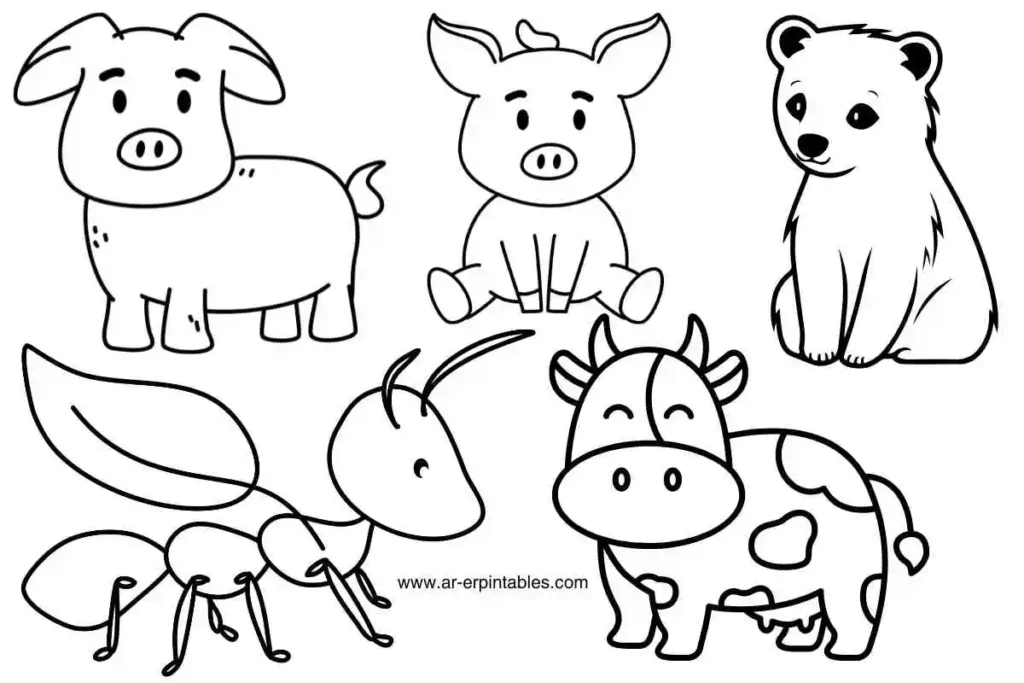
Coloring is such a wonderful way to connect with our little ones. While it may seem like a simple activity, it’s an incredible tool for sparking communication and building those early conversation skills. In this article, we’ll explore how coloring pages spark communication between kids and parents, delve into creative ways to use coloring pages to encourage dialogue, and recommend some fun, interactive resources from Amazon and TeacherPayTeachers that can enrich this experience even more.
So grab some crayons, get cozy, and let’s explore how coloring pages can open up conversations in ways you may have never expected!
Table of Contents
Why Coloring Pages Spark Communication in Kids
At first glance, coloring pages might seem like a quiet activity, but they’re far from passive. When kids sit down to color, they’re engaging with their imaginations, making decisions, and developing fine motor skills. But more than that, coloring pages spark communication by creating a relaxed environment for conversation.
- Encourages Descriptive Language: When children choose colors, shapes, and scenes, they naturally start describing their choices. This sparks a chance for them to use descriptive language, building vocabulary and conversation skills.
- Builds Confidence: Coloring is non-competitive, making it an ideal activity for children to express themselves without pressure. This open environment can lead to more confident communication.
- Opens Emotional Conversations: Coloring can serve as a natural transition to talk about feelings. When kids feel calm and focused, they’re more likely to open up, making coloring time a perfect opportunity for emotional check-ins.
Creative Ways to Use Coloring Pages to Spark Communication
Using coloring pages as a way to spark conversations with your child can be as simple or creative as you’d like. Here are some fun ideas to help you use this activity to its fullest potential.
1. Color and Describe Together
Sit down with your child and color your pages together. As you color, describe the colors you’re using, and ask your child questions about theirs. “Why did you choose blue for the sky?” or “What do you think the bird in the picture is doing?” Asking questions encourages them to think creatively and share their thoughts.
- Amazon Resource: Coloring Books for Kids
- TeacherPayTeachers Resource: Descriptive Coloring Pages for Kids
2. Create Stories Around the Picture
Some coloring pages have scenes or characters. Before or after coloring, work with your child to create a story based on the picture. If they’re coloring a zoo scene, ask them questions like, “What animals do you think are in the zoo? What sounds do they make?” This can lead to a whole storytelling session that makes coloring pages a vehicle for language-building and imagination.
3. Use Color to Talk About Emotions
Coloring is a great way to introduce your child to emotions. You could say, “Today I’m coloring with a lot of blue because I feel calm.” Then, ask your child what colors they’re using and why. This not only sparks communication but also teaches children to associate colors with emotions.
- Amazon Resource: Emotion-Themed Coloring Books
- Free TeacherPayTeachers Resource: Emotions and Colors Coloring Pages
4. Practice New Vocabulary with Themed Coloring Pages
Coloring pages that feature letters, animals, or other familiar items provide a chance to practice new words. For instance, if your child is coloring an apple, introduce vocabulary like “fruit,” “red,” or “sweet.” Repetition of these words helps build language skills, and you’re doing it all in the context of fun.
5. Interactive Coloring Pages for Role Play
Some coloring pages include characters that lend themselves to role-play. If your child is coloring a firefighter or astronaut, talk about what those characters do. You can even take it a step further by pretending to be those characters after coloring. “How would a firefighter help put out a fire?” These types of discussions can build early social skills, empathy, and more.
How Coloring Pages Spark Communication Skills in Social Situations
Beyond one-on-one conversations, coloring pages can also spark social skills in group settings. Whether with siblings, friends, or playgroups, coloring together encourages children to share, negotiate, and communicate with each other.
- Sharing Supplies: Coloring with others teaches kids the importance of sharing and patience. Kids learn to ask, wait, and communicate about shared supplies like crayons and markers.
- Group Storytelling: When coloring in a group, encourage each child to share part of a story about the picture they’re coloring. This builds turn-taking and listening skills, both of which are important for communication.
- Expressing Preferences: Group coloring activities also give kids a chance to express their likes and dislikes. They might say, “I want to color the house blue!” or “I think the dog should be brown.” Having a voice in a group activity helps them gain confidence and develop social communication.
- Amazon Resource: Collaborative Coloring Pages
- TeacherPayTeachers Resource: Printable Group Coloring Sheets-Mandala
How Coloring Pages Spark Conversations About Learning Topics
Coloring pages can also introduce educational themes and vocabulary in a fun, engaging way. Here are some ideas for using coloring pages as a way to start conversations about broader topics.
1. Animal and Nature Themes
Animal coloring pages are a favorite with kids and can introduce topics like habitats, animal sounds, and even basic biology. For example, “Did you know lions live in the savannah? What other animals do you think live there?”
- Amazon Resource: Animal Habitat Coloring Books
- TeacherPayTeachers Resource: Wildlife and Nature Coloring Pages
2. Alphabet and Numbers
Alphabet and number coloring pages are great for introducing language and math skills. You could say, “What letter is that?” or “Can you count the apples on this page?” These prompts encourage early literacy and numeracy in a fun, hands-on way.
3. Cultural and Holiday-Themed Pages
Holiday coloring pages can be a fun way to introduce cultural concepts and family traditions. As you color, share stories about your family’s holiday traditions or ask them to share what they know. For instance, “This is a Christmas tree! What else do we see around Christmas time?”
The Lasting Impact of Using Coloring Pages to Spark Communication
Coloring pages aren’t just about staying within the lines; they’re about creating an interactive, enjoyable experience that encourages children to communicate their thoughts, emotions, and preferences. Whether you’re chatting about animals, describing colors, or creating stories around your drawings, coloring pages truly spark communication and foster strong bonds between you and your child.
So the next time you’re pulling out the crayons and coloring books, remember that you’re not just creating art. You’re building language, listening, social skills, and creating precious memories that will last a lifetime. Let the conversations flow and watch as your child’s communication skills blossom, one coloring page at a time.
Related Articles
- Printable Arabic Alphabet Coloring Pages – Explore how coloring pages make learning the Arabic alphabet interactive and fun for kids.
- Learning Through Play: Essential Tips for Boosting Communication Skills in Early Learners – Learn how play-based activities can foster early communication naturally.
- Engaging Arabic Vocabulary Flashcards – Introduce Arabic vocabulary with these engaging flashcards designed to make language learning fun.
- Using Arabic Alphabet Tracing Sheets to Boost Your Child’s Writing Skills – Tracing sheets help develop writing and fine motor skills in a fun, hands-on way.

